TeachingBooks.net is delighted to welcome award-winning illustrator David Macaulay as our featured guest blogger.
Each month, we ask one distinguished author or illustrator to write an original post that reveals insights about their process and craft. Enjoy!
Putting Together Jet Plane
by David Macaulay

 When I start a book I know what it’s going to be about, but I almost never know the best way to tell the story. With Jet Plane: How It Works (David Macaulay Studio, 2012), I started with elephants. I was thinking about how remarkable it is that heavy things can fly. Granted, elephants may not know much about flying, but they’ve got the weight thing pretty well covered. And that’s why one of my first sketches for the book (1) depicts elephants in an airport terminal waiting to board. (One of them is probably still stuck in the metal detector. I guess I didn’t draw it, so you’ll have to imagine it.) The animals missed the flight in the end, but that’s not unusual.
When I start a book I know what it’s going to be about, but I almost never know the best way to tell the story. With Jet Plane: How It Works (David Macaulay Studio, 2012), I started with elephants. I was thinking about how remarkable it is that heavy things can fly. Granted, elephants may not know much about flying, but they’ve got the weight thing pretty well covered. And that’s why one of my first sketches for the book (1) depicts elephants in an airport terminal waiting to board. (One of them is probably still stuck in the metal detector. I guess I didn’t draw it, so you’ll have to imagine it.) The animals missed the flight in the end, but that’s not unusual.


(2) Here I’ve made a square for each of the 32 pages in the book. That’s the easy part. Filling them in is where it gets complicated. As I sketch, I also make notes. These are usually ideas that pop into my head while I’m drawing that might help me fill in those squares.

This is a sketch (3) of the some of the sections of an airplane that I thought I should discuss. Each part consists of smaller pieces, so I had to start thinking about those, too. In the end, the important thing is to know what really matters and what doesn’t. With a limited number of pages to play with, lots of things have to go. You just have to be sure that they aren’t the important things.
(4) As the ideas start to develop with more sketching, reading, and rereading of the text, I slowly fill in the squares. This becomes my plan—the order and sequence of the entire book. Seeing all the pages at the same time lets me know how the story will flow and tells me if I’ve left something essential out.

In this sketch are some of the ideas for the title page, which helps introduce the story. (5)

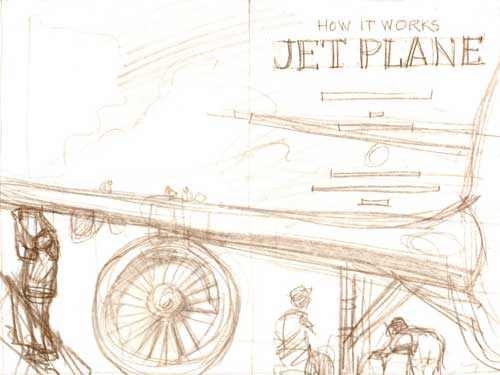
I tried a couple of different things before deciding to put the reader inside the terminal looking out at the plane. I moved the plane around looking for the best view before I attempted the larger drawing. (6)
That sketch didn’t work for me, so I started over, this time adding a boy. (7)
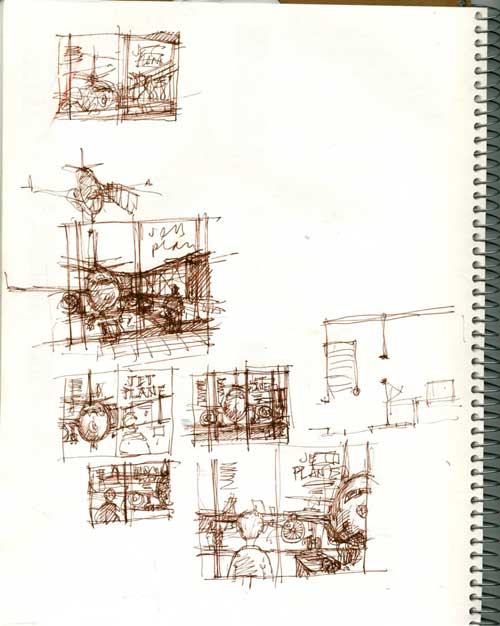
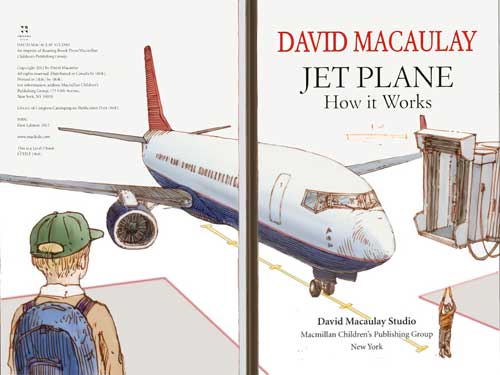
I thought it would add interest. Maybe he’s me. Eventually, I was ready to work on the finished drawing. You’ll notice the addition of words. (8) They’re everywhere. It’s not easy to incorporate them without messing up the illustration—and one reason why it’s crucial to think about them while designing the page.
Some of the illustrations have to help explain scientific things—like the movement of invisible air over and under the wings. (9,10)
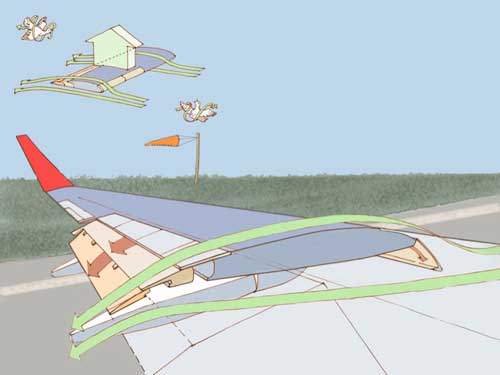
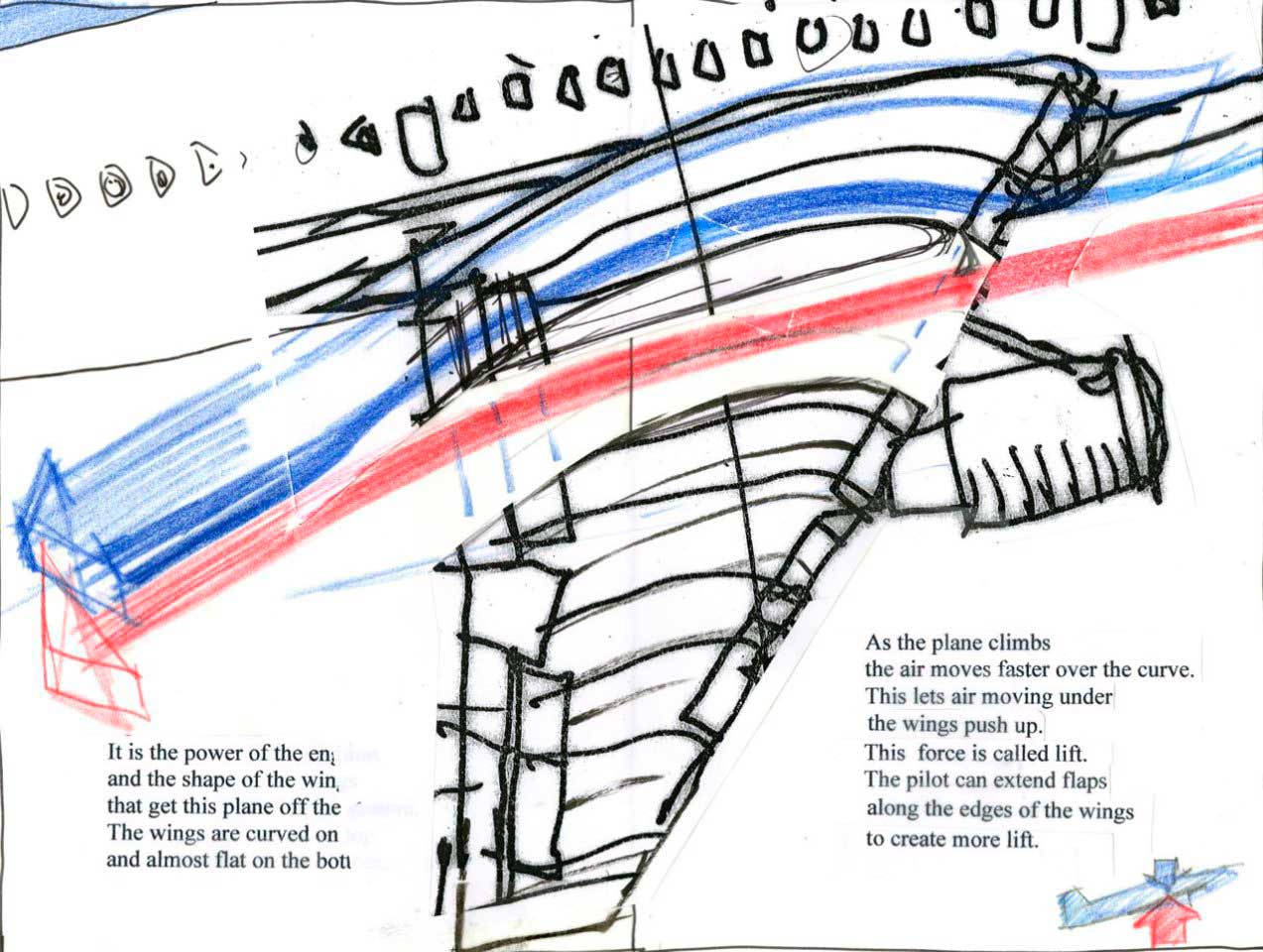
Other illustrations, like this one of the passengers in their seats, are just for fun. Can you see Leonardo da Vinci in the window seat? He started thinking about flying about 500 years ago. I decided he should experience flying next to screaming kids to see if he still thought it was a good idea. (11,12)
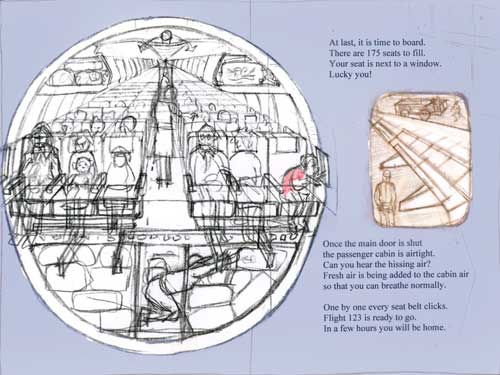

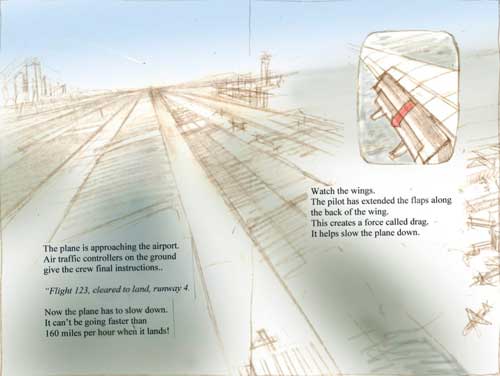
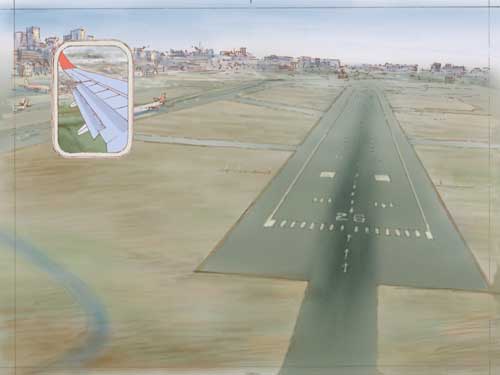
One last thing. I make my sketches with my Lamy Safari fountain pen or my Prismacolor pencils. The final sketches and drawings are on tracing paper. I then scan the drawings and add color on the computer. I’m always a little nervous about color because it takes me a while to get it right. The great thing about working on the computer is that if I don’t like the colors I’ve chosen, I just press command Z and away they go. I have to start all over, but at least I don’t have to draw new lines. (13,14)
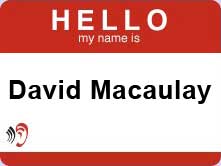 Listen to David Macaulay introduce and pronounce his name.
Listen to David Macaulay introduce and pronounce his name.
See all available resources for David Macaulay.
This text may not be reproduced without the expressed written consent of David Macaulay. All images © David Macaulay.

Leave a Reply